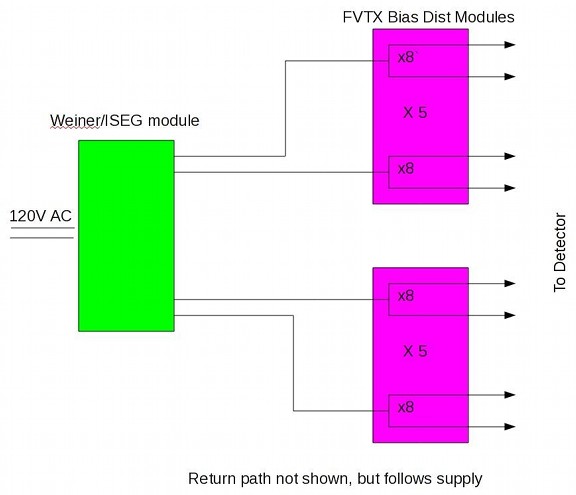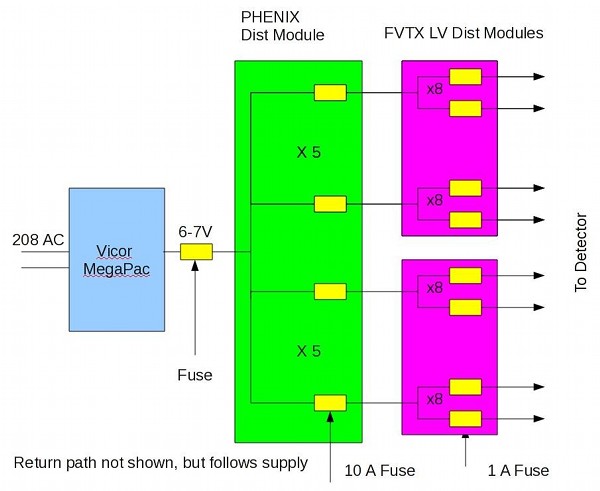Power Distribution Overview
FVTX Power Distribution Overview
The FVTX power distribution can be generally subdivided into 3 subgroups,
bias power for the silicon detectors, wedge low voltage for the front end
readout chips located on the silicon detector and low voltage for the Read
Out Cards (ROCs).
Bias Power:
Bias power is typically < 100V at low current, < 500nA, per wedge. The bias
power is provided by a commercial Wiener/ISEG system which provides 64
channels of bias current. Since the VTX requires of order 400 bias channels,
each channel of the the Wiener/ISEG system is split into 8 channels to
provide the required number of channels on the FVTX bias distribution board.
A block diagram of the distribution system is shown below. In addition to
the 1-to-8 channel split, the FVTX bias distribution card also provides AC
noise isolation and individual channel switching.

Wedge Low Voltage
Each FVTX wedge requires two voltages designated analog and digital voltage
to operate. Both voltages are nominally 5V at < 1A each. This power is
derived from a commercial Vicor MegaPak bulk supply. It is then split into
10 channels, using the PHENIX standard LV distribution cards. In order to
achieve the large number of channels required, 2 x 400, each output of the
PHENIX distribution card is split into 8 channels using the FVTX LV
distribution card. A block diagram of the FVTX LV distribution is shown
below. In addition to the 1-8 channel split, the modules also provide AC
isolation channel switching, and fusing.

ROC Power
Since the ROCs require relatively high power LV compared to the wedge LV,
all LV for the ROC cards is provided using PHENIX standard LV distribution
cards.
We are asking for a preliminary review of the FVTX distribution modules in
order to proceed with fabrication of the boards. For your reference I have
attached documentation on the PHENIX Standard LV distribution system and the
Wiener/ISEG Bias power system. We understand that a full safety review will
still be required prior to operation which will include all cabling fusing
and components.
PDF version
Last modified: Tue Mar 15 18:04:08 MDT 2011


